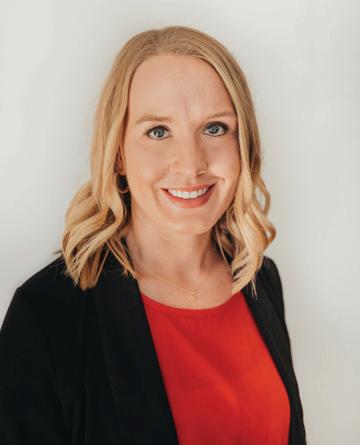BALDWIN HIGH SCHOOL WELCOMES NEW ACTIVITIES & ATHLETICS DIRECTOR

Baldwin High School
is welcoming a familiar face back to campus as Dayton Valentine, a 2013 BHS graduate, steps into the role of Activities and Athletics Director. Valentine’s return comes after several years of coaching and teaching at Blue Valley Northwest, and he’s eager to bring
his experience back to his hometown.
In a letter addressed to the Baldwin community, Valentine shared his excitement and gratitude for the opportunity.
“Coming back to Baldwin in this role feels like coming full circle,” he wrote. “This is the place
ICE CREAM SOCIAL
that helped make me who I am, and I’m grateful for the chance to give back to the community that gave me so much.”
Valentine is no stranger to athletic success.
After graduating from BHS, he went on to play football at Kansas State University. He credits his experiences at Baldwin for helping him reach that goal and hopes to provide the same encouragement and opportunities for current students.
His focus as Activities and Athletics Director is clear: fostering inclusion, confidence, and personal growth through student activities and sports.
“I want every student at Baldwin to feel welcome and included,” Valentine said. “I believe being involved helps students grow as people and feel connected to their school.”
Valentine’s hiring comes after longtime Activities and Athletics
Director Gary Stevanus announced his retirement from the role after a 20year career. As highlighted in the Bulldog Bulletin earlier this spring, Stevanus will remain on staff as the school’s full-time athletic trainer, a position he’s held alongside his administrative duties for many years. Coaches and staff praised Stevanus’ work ethic, dedication, and deep-rooted Bulldog pride during his tenure.
Now, Valentine steps into the position with strong community ties, a passion for supporting Baldwin’s student-athletes, and a deep appreciation for those who came before him.
He invites community members to reach out with ideas or questions and looks forward to cheering on the Bulldogs throughout the year.
Valentine can be reached at DValentine@ usd348.com.
BALDWIN CITY SCHOOLS BREAK GROUND ON BOND PROJECTS AND CAREER TECHNICAL EXPANSION
Additionally in USD 348 news, Baldwin City community members, school officials, and local leaders gathered Tuesday evening, July 15, to officially break ground on the district’s new Career Technical Education (CTE) expansion. The ceremony, held at the high school’s bus loop, marked the beginning of major construction funded by the $17 million bond approved by voters in May 2024. This bond includes a wide range of projects aimed at improving both academics and safety throughout the district. Along with the CTE addition, the bond will fund renovations to the high school’s chemistry and biology classrooms, safety and security upgrades, and the addition of roughly 200 new parking spaces. Other improvements include a new bus loop, enhanced traffic flow for student drop-off and pick-up, and updated interior and exterior restrooms.
Construction on parking areas and traffic flow improvements had already begun prior to the groundbreaking. Work on the CTE addition and surrounding areas will continue over the next two years, with plans to open the new facilities for the 2026-2027 school year.
Once completed, the expanded CTE program will offer courses in agricultural technology and mechanics, metals, drafting and graphic design, business and entrepreneurship, culinary arts, and health sciences. The addition will also include an agricultural lab, makerspace, greenhouse, art classrooms, and family and consumer science spaces.
The bond projects are being designed by DLR Group with Loyd Builders serving as the construction manager. These improvements aim to expand academic opportunities, provide hands-on career training, and improve safety across district campuses.
WHILE HOME CONSTRUCTION IS SLOW IN LAWRENCE, BALDWIN CITY HAS BUILDING LOTS READY FOR 120 HOUSES
Story by: Chad Lawhorn, Journal-World
On a parcel of pasture not far from where the Santa Fe Trail once stretched, Baldwin City leaders are embarking on a big adventure.
Area developers in this town of about 5,000 people in southern Douglas County have presented, and the city council has approved, a plan to convert this rolling grassland site into a new neighborhood that will have 35 big homes setting on lots of about 1 acre each.
Roads and utilities are already in place, one house is under construction, and local leaders are looking forward to the property taxes the homes — likely in the $700,000 to $1 million range — will pay. They’re also hoping the big homes will mean big families that will provide a boost to school enrollments, which are under pressure, like many others, as birthrates have been declining.
“I like to think that is going to bring a great family to our community,” Dave Hill, CEO of Baldwin-based Mid-America Bank and also the president of the town’s economic development entity, said of each mega lot and others like it.
So, what’s adventurous about it? Well, it is kind of like those pioneers in covered wagons crossing a raging river — there’s a strong current trying to push you a different direction.
In Lawrence, or many other communities, you probably wouldn’t have much success proposing a neighborhood full of 1-acre homesites. Professional planners tout the importance of density, density, density. There’s a worry among urban planners that traditional single family development often doesn’t produce enough new tax dollars to pay for itself over the long run — the costs of everything from maintaining the streets in front of the new homes to expanding fire departments to serve a larger population.
That’s why many planners would say a 1-acre lot should have at least four or five houses on it, or maybe even better, an apartment complex with 12 or 15 units.
Such thinking is now the norm at Lawrence City Hall, and city commissioners have approved a new development code that encourages dense development. That could be traditional apartment complexes, or it might be multi-story buildings with stores and offices on their ground floors and living units on the stories above.
As for the idea of new neighborhoods with homes built side-by-side with sidewalks in front and cul-de-sacs to congregate, Lawrence still allows them. However, the newest of those developments — which are largely still in the planning stages — propose that the majority of homes be duplexes rather than single-family houses. When single-family houses are proposed, they often are slated for lots 5,000 square feet in size, which is about 30% smaller than the traditional lot that came to define west Lawrence during its suburban heyday.
If you wanted to paint this in the extreme, your difference between Baldwin City and Lawrence could be summed up by mega homes versus duplexes. The reality is more complicated, of course. Lawrence isn’t going to be all duplexes, and mega homes will still be in the minority in Baldwin City. There currently are two other neighborhoods under development in Baldwin City, and they feature more traditional-sized homes.
It is worth noting, though, that those new Baldwin City neighborhoods will have far more single family homes than duplexes, and those single family lots — while not nearly an acre — are about 40% larger than a typical single family lot in a new Lawrence neighborhood.
In other words, there is a real difference between how Lawrence and Baldwin City are trying to build their communities — and maybe in what they believe, as well.
“The philosophy in Baldwin is that Baldwin City is open for business,” Hill told the Journal-World.
Hill — whose bank is the largest residential lender in Douglas County and does much business in Lawrence — didn’t specifically characterize Lawrence’s philosophy. But in a speech this week to the Baldwin City Chamber of Commerce, he did note how slow housing growth is in Lawrence, currently.
In rough numbers, Baldwin City — a community of approximately 5,000 people — hopes to sell about 30 newly-constructed single-family homes this year. Lawrence — a community of approximately 100,000 people — is on pace to build 38 single family homes this year.
Hill told the chamber crowd that Baldwin City — and its sometimes rival but similarly-sized eastern Douglas County neighbor of Eudora — have a real
opportunity to attract new residents from Lawrence who are struggling to find a home that they want in Lawrence.
“I mean, they used to build 300 homes a year,” Hill said of Lawrence, pointing to numbers that were in the early 2000s or 1990s. “Now they’re doing 40 or 50. That gives you an idea of how much it is off. But it also tells you what an opportunity we have in Baldwin and Eudora to really capitalize on their inability to bring lots on the market.”
Offering incentives
Like the wagon trains that used to depart from here, there is a bit of a collective spirit at work with Baldwin’s housing efforts. In other words, developers aren’t doing this on their own.
Government is providing a large helping hand. Baldwin City currently has three new neighborhoods with approximately 120 available building lots. Each one of those neighborhoods is receiving a special property tax break.
The city is using a state program called Reinvestment Housing Incentive Districts. The districts capture nearly all of the new property tax revenues generated by the new houses constructed in the neighborhood. For up to 25 years, the property taxes those homeowners pay are rebated back to the developers of the neighborhood, who can use the proceeds to reimburse themselves for some of the development costs they incurred. That includes the price they paid for the land, plus the construction costs they paid for the streets, sidewalks, utilities and other such infrastructure items.
It is easy to see how the districts would add to the concern of planners who worry that residential growth does not generate enough new taxes to pay for itself over the long run. If the districts are capturing nearly all the new tax revenue generated by the neighborhoods, that leaves little for the city to fund the additional costs associated with serving those new homes and residents.
The housing incentive districts are available to be used in Lawrence — up to 100 building lots per year could be part of any such district — but the City of Lawrence has thus far not created any districts. (Lawrence has provided tax incentives to multi-family apartment projects that are part of an affordable housing program, but has not provided such incentives to singlefamily neighborhood developments.)
Baldwin City officials are aware of the concern that the districts will deprive the city of needed, future revenues. But many also believe in a maxim that a certain amount of growth is needed to keep a community healthy.
“They recognize that if we are not growing, our cost of living is increasing,” Baldwin City Mayor Casey Simoneau said of his fellow council members.
The districts appear poised to create growth. The 120 lots should provide three to five years worth of new homes for the community, Hill estimated. He also said he’s not sure even a fraction of those lots would be available if the incentives weren’t offered. He said he believes the incentives are the only thing that is allowing the land developers to make a profit on many of the developments.
Land developers generally make money by selling building lots to builders, who then sell a completed home to a resident. In Baldwin City, typical single family lots are selling for about $55,000 to $65,000 each. In Lawrence, single family lots are selling for about $80,000, in many instances, real estate executives and lenders told the Journal-World.
Whether Baldwin City homebuyers are seeing the benefit of those lower lot prices is not entirely clear yet. Simoneau, who also is a real estate agent, said he believes newly constructed homes are selling for less in Baldwin City than similar new homes sell for in Lawrence. But studies with reams of hard data aren’t out there yet, as the program is new in Baldwin City and the number of newly constructed homes on the Lawrence market is limited.
But, if you want to make your own comparisons, a 2400-square-foot, 4-bedroom, 3-bath home recently sold with a list price of nearly $489,000 in Baldwin City, according to advertisements. While the Lawrence market doesn’t have a lot of comparable new homes currently, one of the newly constructed Lawrence homes now advertised for sale is a 3-bedroom, 3-bath 2,300-square-foot-home with a list price of $634,000.
In reality, though, more time will be needed to see if the incentive program is consistently producing homes at lower prices than Lawrence.
COMMUNITY
Continued from Page 2
Simoneau, though, said he is confident the program is going to produce more residents, who will help the economy in more ways than just paying property taxes.
“I hear quite often from residents that they want more restaurants and more shops, more of all of that stuff, and that doesn’t come without more residents here,” he said. “We have to get people who want to move here and be part of our community so the businesses that are here will be successful and will lead to more businesses here.”
Market decides
While government is getting involved in providing incentives to Baldwin City developers, it is staying out of another part of the development process. It is not trying to convince developers what size or type of houses to build.
“It kind of has been the developers that have really driven that bus,” Simoneau said of how dense new developments should be.
In Lawrence, several real estate and development leaders said the city has a firm hand on the steering wheel. That showed itself in the process to bring the Beth’s Ranch neighborhood to the market. Beth’s Ranch is at the southeast corner of Sixth and George Williams Way, and is one of the few new neighborhoods under development in the city.
When plans were first filed in 2022, the neighborhood was scheduled to have 80 single family homes. But those plans stalled in the approval process, and developers were told to look at adding more density to the project. The approved project ended up with 24 single family homes, and 82 duplex units. In other words, the density of the development increased by about 30% even though the overall acreage of the project did not grow.
Planners dictating density levels is nothing new in a community. Land is limited, and ensuring that a community has a sustainable development pattern is one of the primary roles of planners and local government.
But real estate and development leaders also argue that you have to take into account what buyers want to buy.
“In Baldwin City, they’re letting the developers decide what they can market,” Hill said.
In Lawrence, developers and builders have a different type of decision to make: Do they build a bunch of townhomes and hope that buyers are ready for that type of more dense living?
Chris Earl, a broker and co-owner of Stephens Real Estate, said it is still too early to know how that question will get answered. But Earl said he has seen some signs of hesitancy on the part of builders. In a town where building lots usually get bought by builders as soon as they become available, there are some duplex lots that remain unsold.
Earl said his company — which has offices in both Lawrence and Baldwin City — has had success selling duplexes — or townhomes, as the industry often calls them — in Lawrence recently. But the bulk of new townhome construction has not really begun in Lawrence, so buyer feedback has been limited.
“Townhomes may be just fine and buyers may be perfectly happy with that once they are up and ready,” Earl said. But he also noted that some townhome lots are ready for construction, but aren’t underway.
“I think maybe builders are having a little bit of pause on how confident they are that this what buyers are going to want,” Earl said.
For the community, the questions go deeper than whether duplexes ultimately will sell. There are many different types of buyers. Perhaps townhomes will be popular with younger and older buyers, but will they be bought by families with children? Lawrence is among the communities seeing flat to declining public school enrollments, which puts pressure on how many schools the community can feasibly keep open.
Ultimately, Earl thinks Lawrence is in the process of answering a couple of key questions about its evolving housing stock.
“The question is, will the market say they don’t want a brand new townhome for what it costs to have a new townhome,” Earl said. “Or, will the market say, I want brand new, and I want Lawrence, Kansas and that is what I can get here, so I’m going to buy.”
How those questions get answered, may determine a generation’s worth of growth for two towns — Lawrence and Baldwin City — that are taking diverging trails.

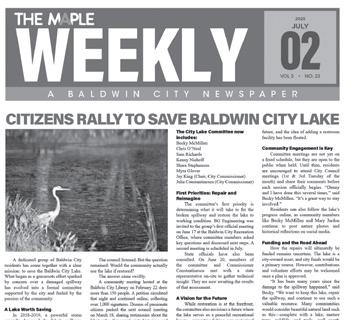
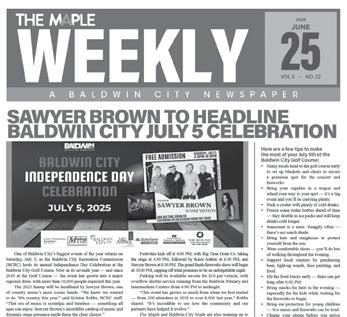
THE MAPLE WEEKLY TRANSITIONS TO FREE COMMUNITY DISTRIBUTION
Big news is coming to Baldwin City’s local paper — The Maple Weekly is officially transitioning to a free public distribution model starting now! Residents can currently pick up free copies of the paper each week at popular locations like the Baldwin City Post Office entrance and Baldwin City Market. As the publication continues to grow, we want to ensure more community members have access to the stories, photos, and local updates that make Baldwin City so special. This change will help expand our readership and allow us to share more of our town’s voices with everyone.
Still Want It in Your Mailbox?
We’ve Got You.
For those who prefer the convenience of home delivery, we will continue to offer a paid subscription option for just $25/year — which helps us cover postage and labor costs.
Current Subscribers: If you currently
subscribe, don’t worry — you will continue receiving your newspaper as usual through the year.
Credit Card Payments: If you paid by card, your subscription will renew automatically at the new lower rate ($25).
Check Payments: If you paid by check, you’ll receive a letter in November with instructions on how to renew at the new rate.
If you wish to cancel your paid subscription, simply contact Jenni at jenni@ baldwinmaple.com and we’ll be happy to take care of it.
Don’t forget about our newspaperemail option — so you can opt in to receive a digital copy of the paper each week right in your inbox. Look for sign-up details on The Maple Weekly’s website and facebook page soon!
This is a big step for us, and we thank you for being part of the journey. We’re excited to keep growing, together.
ROAD WORK & INFRASTRUCTURE
UPDATES
Douglas County Chip and Seal Program Begins Mid-July
Douglas County will begin chip and seal work on 26.5 miles of county roads in midJuly, including the lake road near Baldwin City and 1055 north of Baldwin City. Expect temporary lane closures and minor delays. Work will be done in two-mile stretches. For more information: https://tinyurl.com/ mstzr4va
City Road Resurfacing Program
Baldwin City’s annual resurfacing program is underway, targeting streets on the southeast side of town for mill and overlay work. City crews are currently working to fill and patch potholes, and Bettis Asphalt is expected to be in town mid-to-late August.
For more information: https://tinyurl. com/28tdk3mc
Brick Street Restoration Project
An overview of the Brick Street Restoration Project is now available, including documents, photos, and updates as they become available.
For more information: https://tinyurl.com/ysv6z3zn
Brick Street Leaf Insert Survey
Residents are invited to provide input on a proposed leaf insert design for the intersection of 8th and High. This survey closes on Monday, July 14th, at 12 p.m.
For more information: https://tinyurl. com/2jpbzpz5
City Property for Sale by Closed Bid
A parcel of city-owned property on Highway 56 is available for purchase through a closed bid process.
For more information: https://tinyurl. com/443k7a6z
PANASONIC TO DELAY PRODUCTION AT KANSAS BATTERY PLANT AS ELECTRIC CAR SALES DECLINE, POLICIES SHIFT
Story By: Morgan Chilson, Kansas Reflector
TOPEKA — Panasonic is delaying full production in its De Soto battery plant because of dropping electric car sales and U.S. policies that do not support electric cars, international media reports.
The $4 billion economic development project, billed as the largest in Kansas history, is threatened because of decreased electric car sales at Tesla and skepticism from President Donald Trump about encouraging electric vehicle adoption, according to the Nikkei Asia news outlet.
The plant was expected to reach full production by March 2027, and a new target date has not been set, Nikkei reported.
The president’s “big, beautiful bill” eliminates tax credits for the purchase of electric vehicles as of Sept. 30, along with eliminating or decreasing multiple green energy tax credits.
The De Soto plant, which was projected to create 4,000 jobs, has a grand opening scheduled Monday.
The Panasonic plant began construction in 2023 after receiving Kansas tax credits, through a program known as APEX that the state created to draw in large economic development projects. Incentives include rebates on capital investments, payroll and staff training.
The APEX program also lowers the corporate income tax rate by 0.5% for Kansas businesses for the fiscal year after a megadeal is signed. Under the APEX deal, Panasonic was expected to receive $829.2 million over 10 years.
The company had plans to provide at least 4,000 jobs, increasing the state’s annual labor income by more than $505 million. The state anticipated the project will create an additional 4,000 jobs through suppliers and community businesses. The state expected to see a $26 return for every $1 invested in tax incentives.
The De Soto community also offered incentives that were based on the company agreeing to employ 2,500 employees, well below the estimated full employment of 4,000.
The city offered to complete $229 million of public infrastructure projects, such as road improvements, and water and sewer projects, using Tax Increment Financing funds, a common economic development tool that uses increased property taxes received from developments to fund projects.
De Soto Mayor Rick Walker said he has not been notified of any changes in Panasonic’s plans to change their production schedule or their hiring at the plant, but he also was not surprised. The federal approach to a company trying to bring manufacturing to the U.S. has been disappointing, he said.
“We have a company reshoring jobs and then every activity (the federal government) takes has worked against that,” Walker said.
The slowdown of electric vehicle sales has been anticipated, he said, but he added that projections for sales overall still show strong market opportunities.
“What was being reported earlier, by 2030, was almost 50% of new car sales could be EVs, and


they’re scaling that back to 40,” he said. “We’re going from less than 10% to 40. It’s still a growth market. I think we’re still in a good position.”
Walker said he hopes the news doesn’t overshadow the De Soto and Kansas community’s excitement about grand opening events on Monday.
“We’re super pumped that they’re having the grand opening Monday. It’s a big day and it’s a big thing in our area for sure,” he said.
Panasonic has already hired 1,100 employees, and 1,100 housing units are being built in De Soto, said Theo Stavropoulos, spokesman for the Kansas Department of Commerce.
“Local businesses are seeing the influx of new customers, driving local sales tax revenues up and reducing the local property tax mill levy,” he said. “As Panasonic’s production ramps up, Kansas will continue rising to meet the new economic opportunities made possible by their transformational investment.”
Stavropoulos did not answer questions about how slowing the production timeline might affect Kansas incentives offered to develop the project.

COMMUNITY
DOWNTOWN BALDWIN
CITY GEARS UP FOR JULY THIRD FRIDAY MARKET
Baldwin City’s popular Third Friday Market returns on Friday, July 19, bringing an evening packed with shopping, entertainment, and summer fun.
Downtown streets will close from 4 to 10 p.m. to make room for the lively event, as vendors of all kinds line the streets offering everything from handcrafted goods and boutique items to baked treats, local produce, and more.
The evening’s festivities will also feature a favorite crowd event—the watermelon eating contest—set for 7
p.m. Contestants will battle it out for bragging rights and prizes in this fun, family-friendly competition.
Shortly after, the music kicks off at 7:30 p.m. with Wheatfield Rebellion taking the stage at Sullivan Square. Attendees can enjoy the live performance while shopping, dining, and soaking in the summer atmosphere.
With something for everyone, this month’s Third Friday promises another great evening of community, entertainment, and local flavor.
WATERMELON EATING CONTEST
TIME: 7:00 P.M., IN FRONT ON SULLIVAN SQUARE STAGE CAN YOU EAT A WATERMELON SLICE FASTER THAN ANY BODY? SEE FOR YOURSELF AT THE WATERMELON EATING CONTEST INSIDE SULLIVAN SQUARE. SIMPLY SHOW UP AND TELL THE JUDGE YOU WANT TO PARTICIPATE (IT’S FREE). FREE WATERMELON SLICES WILL BE AVAILABLE AFTER THE CONTEST.
PRIZES: 1ST: PRIZE BASKET ($75), 2ND: PRIZE BASKET ($50), 3RD: PRIZE BASKET ($25)


EVENTS EVENTS
July 18
Baldwin Musical Presents: Disney Frozen Kids
Baldwin Performing Arts Center 415 Eisenhower St., 5 p.m.
July 17
Story Time on the Patio Uplift Baldwin, 9:30 - 10:30 a.m.
July 18 Summer Nights in the Gardens
Vinland Valley Nursery, 5 - 8 p.m.
July 18
Science Over Spirits with Dr. Kartik Munshi
Baldwin City Distillery, 6 - 8:30 p.m.
July 18
Third Friday Market downtown Baldwin City, 6 - 9 p.m.
July 18
Art Gallery Opening Reception
Lumberyard Arts Center, 6 - 7:30 p.m.
July 18
Ice Cream Social Ives Chapel, 6:30 p.m.
July 19
Baldwin City Farmer’s Market near Sullivan Square, 8 - 10:30/11 a.m. questions? contact hornbergerfarms@gmail.com
July 19 July Summer Art: Saturdays with Elizabeth Lumberyard Arts Center, 10 a.m. - 12 p.m.
July 19 Craft Your Stress Away
City Public Library, Noon - 2 p.m.
July 19
Mic
City Distillery, 5:20 - 9 p.m.
July 21 Schoolyard Splash Incoming 3rd - 5th Grades
City Pool, 7:30 - 9:30 p.m.
July 22 Free Summer Art and Creative

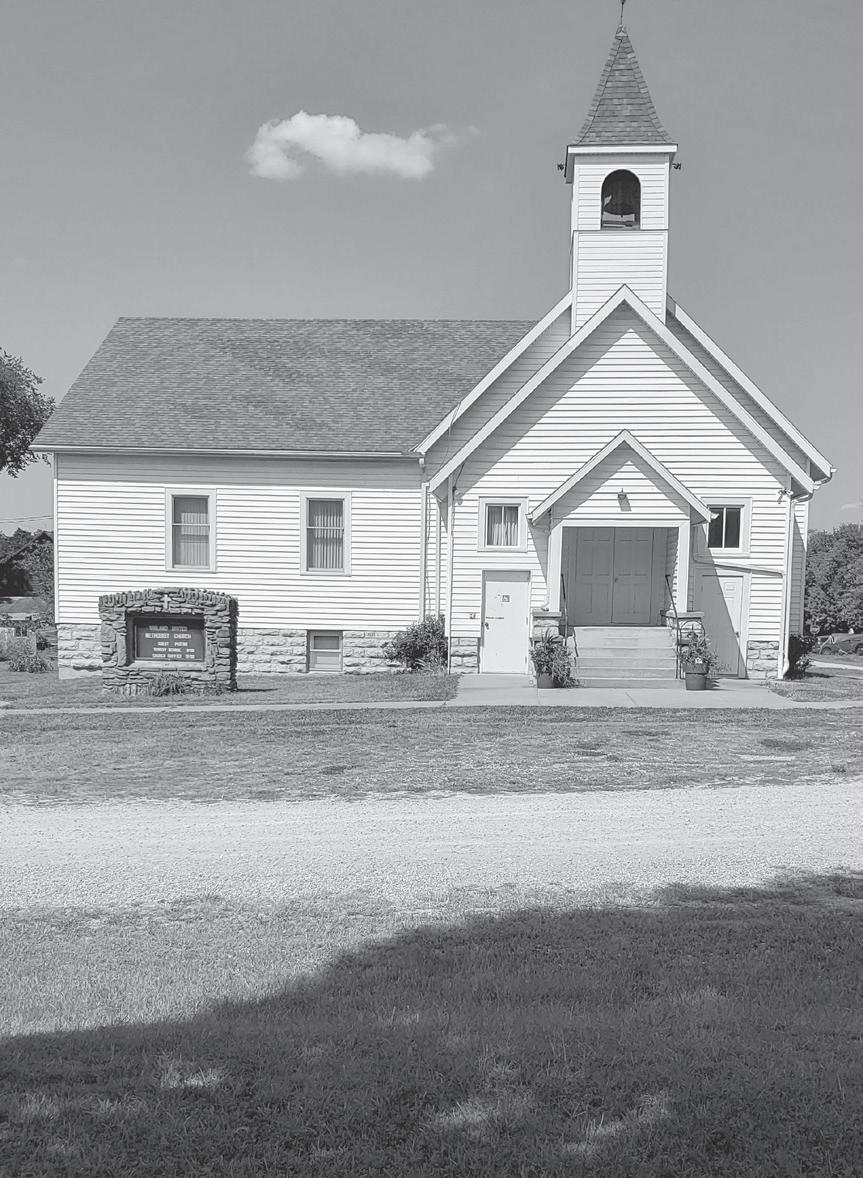
COMMUNITY VOICES
HOME AWAY FROM HOME READY, SET, LOVE
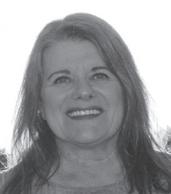
DEAR HOMEKEEPER
By Cat Henry
It’s hard to believe we’re already at the July midpoint of summer— meteorologically speaking. If you’re one who looks at the seasons astronomically, August 6 technically marks the halfway point between summer and winter solstices. By my own reckoning, July 26 feels like the true middle of summer, balancing both calendar systems.
As I plan topics for fellow homekeepers this season, one theme keeps rising to the surface: home away from home. With college move-ins just around the corner, now is the time to start planning—whether your child is heading to a dorm or their first apartment. If they’re anything like most young adults, it’s a case of “they don’t know what they don’t know.” All the little things you’ve quietly provided to help life run smoothly are about to be deeply appreciated.
Have you seen some of the latest (extreme) dorm decorating trends?
Parents are now hiring interior designers to transform their students’ college living spaces into Instagram-worthy havens— complete with custom linens, high-end furniture, and coordinated décor.
As if college isn’t expensive enough! It’s a world away from my painted wooden crates used for bookshelves.
Do you recall the first place you lived after leaving home? Mine was a one-room efficiency in a lower-income neighborhood near my college in Texas. It had hardwood floors. One edge of the floor didn’t quite meet the wall in the long closet wall, leaving a full inch of ground visible. I had a window unit air conditioner, more than a handful of mosquitoes, and a small kitchen with basic appliances. Furnished with a full-size bed and furniture left behind from previous tenants, it worked. It was mine. And it fit in my budget.
Over the next few articles, I’ll be offering tips for creating comfort and style in small student spaces—starting with the baseline dorm room, which is usually around 12 feet by 19 feet (228 square feet)
for two students. Single rooms can be even smaller—7x10 feet to 9x12. It’s wise to check your student’s specific school for dimensions, since room layouts vary widely.
When my kids reached this milestone, I loved helping them prepare. I was not as intrusive as hiring an interior designer or being too all-knowing about what to have on hand. I helped them think through storage solutions, personal touches, and how to make a shared space, in most situations, feel like their own. A pile was started at home of things they had already bought before we hit the stores to purchase the rest.
I learned a few things along the way. I bought one daughter a ladder-style bookshelf from Pottery Barn—only for her to haven given it away before I could rescue it. Another time, I gifted a beautiful vintagestyle Jacobean floral duvet to my daughter when she moved into a shared apartment in New York. In both cases, I justified the items as housewarming gifts! The duvet was lost in the moving out shuffle—discarded with the furniture, mirrors, and kitchenware too costly to ship or store, that line the sidewalks during for free pickings, such is the culture of “free-cycling” in NYC. These days, we (particularly not in the big cities) have digital versions of the same through Facebook “Buy Nothing” groups.
These little stories remind me that as parents, we’re often vicariously reliving our firsts through our kids. And that’s okay. There’s something beautiful about sending them off while remembering the courage it took to leave home ourselves.
But as exciting as it is for them to strike out on their own, they will miss home. Eventually, they’ll appreciate all the quiet things you did to make their home a sanctuary. One of my favorite memories during this time is the ask from each of my four children, upon going to the grocery store after being picked up from the airport. Unbeknownst to them that their sibs also requested the same now, upon reflection, seems like a part of the rite of passage. Each asked, “Can I get the name-brand cereal?”
Until next time, warmest regards. Cathenry.ch@gmail.com
P.S. Homekeeping doesn’t stop when they leave; it simply travels with them.

June and July are such wonderful times to be in love! The earth is green, the flowers are in full bloom and we get to strip down to the bare minimum of clothing! It’s kind of awesome when you think about it. Everything is blooming fresh and new and full of promise. Why wouldn’t you think of love during this time of year? It seems almost automatic!
So, why is it that so many of us don’t have that kind of love in our lives, especially during the months of love? Could it be that some of us have blocked out the thing we all want most in this world? Could it be that love has proven to be such a hassle, we’ve convinced ourselves we don’t need or want it? It could indeed! But the truth is, love is why we’re here!
Giving love and receiving love and producing love is our purpose on this earth. Yes, I know all too well that relationships can be difficult and taxing and require more from us than we believe ourselves capable of giving. I know those feelings too, but the truth is, love is not what makes relationships hard. Love, when we do it right, is what binds relationships!
Let’s start from the beginning. We meet Mr. or Ms. Right. Our first connection is the energy they emit and their stunning good looks (however you define good), and we discover that we have so much in common! They’re smart and funny and intelligent and affectionate and fascinating! We can’t wait to be with them, to talk to them, to touch them. Every new discovery is thrilling! So why, six months later, are you seeing them differently? The most common excuse I hear is “they changed.” So, let’s examine that shall we?
In the beginning of most relationships, everybody puts their
best foot forward. It’s almost instinctual. We want to be seen in our best light. We want our significant other to see all the good stuff about us and that’s normal so we put all the good stuff on display. But over time (six months max), we stop making the effort it takes to display our best selves and we fall into our old patterns of everyday living and our interpretation of our lives. Now all of a sudden, our significant others are seeing a different side of who we are. Have we changed or have we simply revealed one of many sides of who we are?
We as humans, have so many different sides and so much depth that it can take a lifetime to truly learn who someone is. In the beginning, when we see all the good parts, (and by the way, we all have those very same good parts), we feel like we’ve struck gold and the joy is overwhelming! But I say to you, love is knowing the good, the bad, the lazy, the indifferent, the challenging sides of a person and deciding (yes deciding not falling) that you are compatible enough to bring out the best in each other in the most productive ways. It’s deciding that even their worst traits (and we all have them), don’t define the direction of their best desires.
So, if you want love (and we all do no matter what you’ve convinced yourself of). Keep your eyes open for the person that best fits with your personality (good and bad traits), who is willing and capable of opening their hearts to you and who, even on their worst day (or yours) understands the value of a good old fashioned hug. Then I say they are Ready when they have the traits you like. They are Set, when they understand there is still work to be done. And it’s okay to Love when you have a meeting of the minds of what your future should hold. Ready, Set, LOVE! So, if you really want to know what I think, “Just Ask Me, I’ll Tell You!”




MONEY MARKET RATES
CERTIFICATE OF DEPOSIT (CD/IRA)


